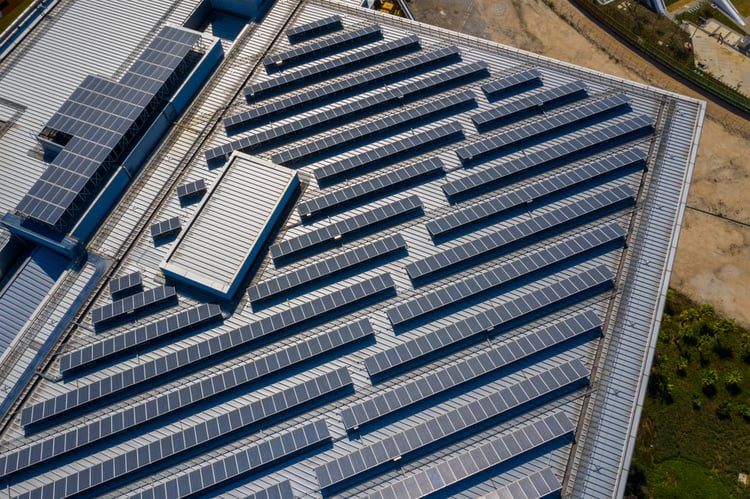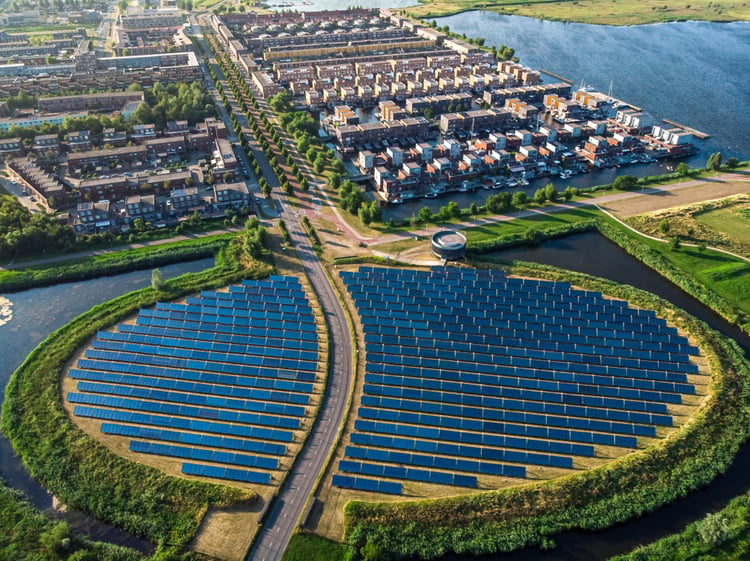The 3 Energy Metering Options for Commercial Solar PV

Generally, a company who installs a commercial solar array has the goal of reducing energy costs. However, there are many ways to measure solar electricity and subtract it from power bills. When a commercial building has enough space for solar panels on-site, electricity can be consumed directly while surplus production is exported to the grid in exchange for bill credits. However, not all commercial energy users have a suitable area for a large solar array, but they can save on power bills with an off-site installation.
Considering a community solar power project? Get a professional PV system design.
Here we will discuss the 3 main energy metering options available for commercial solar installations:
- On-site net metering
- Remote metering
- Community solar power
Being able to reduce energy costs with an off-site solar array is especially helpful in places like New York City, where finding space for a commercial PV system can be challenging. Here we will compare the three metering options listed above, mentioning the cases where each of them is viable.
On-Site Solar Power

This is the simplest configuration: having a commercial solar system and the building using its electricity behind the same power meter. Solar electricity is consumed directly by on-site loads, and surplus production can be easily exported to the grid. In New York State, the compensation received for solar exports is determined by the size of the project:
- Commercial solar projects below 750 kW AC get Net Energy Metering (NEM).
- Larger solar arrays get the Value of Distributed Energy Resources (VDER).
Net energy metering or NEM is a simple concept. Surplus electricity from a commercial solar array is measured and subtracted from your power bill. If there is a month where the solar energy credit is higher than the amount charged by your electricity provider, the difference is rolled over to the next month.
The Value of Distributed Energy Resources or VDER is a compensation method that considers the location of solar arrays and the time when they provide electricity. NYSERDA has developed a calculation procedure that considers several factors:
- Energy value
- Capacity value
- Environmental value
- Demand reduction value
- Locational system relief value
- Market transition credit or community credit, for community solar projects
The VDER compensation method is the default option for solar projects larger than 750 kW AC. Solar PV systems below 750 kW AC get Net Energy Metering by default, but you can choose the VDER instead if the project only serves one load.
Remote Metered Solar Power
As mentioned before, not all commercial buildings have enough space for a solar array. For example, high-rise buildings have a very small rooftop area relative to their floor area, and mechanical equipment limits the available space for solar panels even more. Remote metered solar power is an excellent option in these cases:
- A commercial solar array is installed in another property with enough space.
- Electricity generation from the remote PV array is credited with the VDER method, and the resulting amount is subtracted from your building’s power bills.
- The savings achieved by a remote metered solar array can be split among several buildings with different power meters.
Commercial buildings with different utility accounts can share the savings achieved by a remote metered solar array. However, they must all be located in the service territory of the same utility company to make this possible.
Community Solar Power

A community solar project is very similar to a remote-metered project, since many consumers share the savings of a remote PV array. However, a commercial PV array must meet certain requirements to be considered a community solar project in NY state:
- Having at least 10 subscribers, each getting at least 1,000 kWh per year.
- Community solar projects that serve tenants in multifamily buildings can have less than 10 subscribers.
- Subscribers with a demand of over 25 kW are allowed in a community solar project, but they cannot use more than 40% of electricity generation.
In addition to these general requirements, commercial solar projects must meet the technical requirements provided by the local utility company. Community solar power is often referred to as Community Distributed Generation (CDG).
If your community solar project is located in the Con Edison service territory, the NY-Sun Megawatt Block Program offers an incentive adder of $200/kilowatt, in addition to the normal incentives offered for nonresidential solar arrays.

Michael Tobias
Michael Tobias, the Founding Principal of NY Engineers, currently leads a team of 150+ MEP/FP engineers and has led over 4,000 projects in the US
Join 15,000+ Fellow Architects and Contractors
Get expert engineering tips straight to your inbox. Subscribe to the NY Engineers Blog below.

